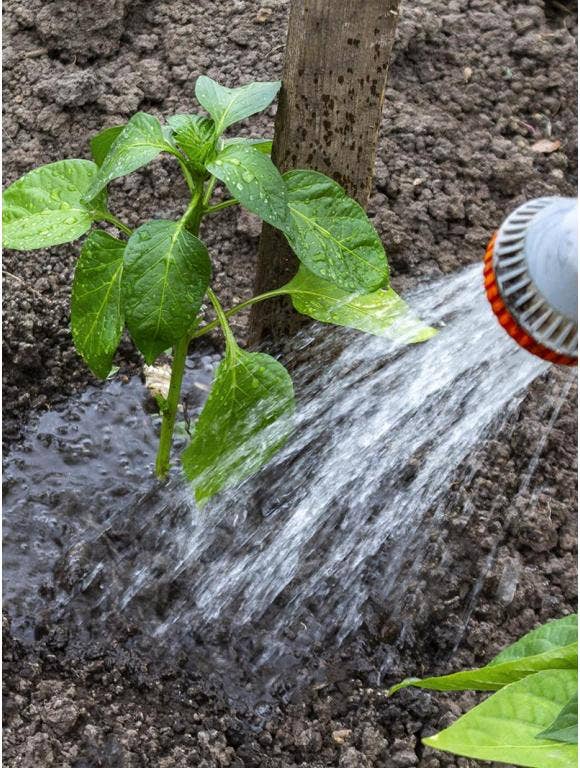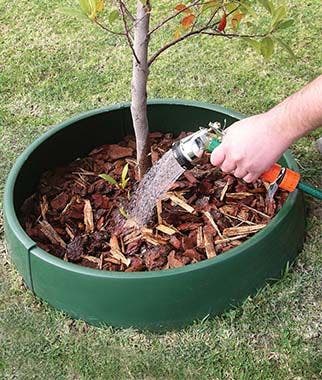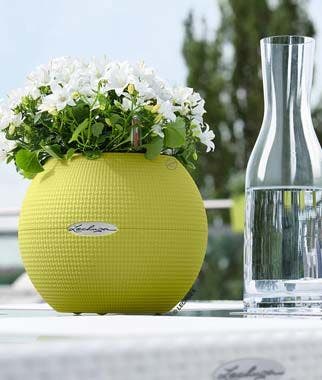

Gardeners watering habits vary widely. Some gardeners are busy in their non-garden life and allow their poor plants to sit dry and thirsty until they’re withered before they get water. On the other hand, some gardeners pampers their plants by drowning them in too much water. With either extreme, you stress your plants. Weakened plants are the first to fall prey to bugs & diseases and produce fewer blooms or vegetables.
Finding the Right Balance for Watering Your Garden
Watering seems simple, but actually takes a little finesse to do properly. Start by identifying your soil type and measuring the actual amount of water your plants receive.
“Vegetables need an inch of water per week delivered by either rainfall or irrigation. This converts roughly to six gallons per square yard per week,” said Robert Polomski Clemson Extension Horticulturist at Clemson University, “On sandy soils water twice per week 1/2 inch each time. Clay or loam soils can receive 1 inch of water once per week.”
Thoroughly soaking the soil with infrequent watering is better than shallow regular watering. Deep soaking encourages plant roots to reach deep into the soil while shallow watering keeps roots close to the surface, leaving the plants susceptible to drought.
Polomski said to rely on common sense and observation to decide when to water.
“A sandy soil that's dry to a depth of 2 to 4 inches would indicate a need for water. In clay soil, simply not being able to dig easily down to this depth is enough to know that it's dry,” he said.
An inexpensive rain gauge is an easy way to keep track of how much water your garden is getting. If your plants have not received an inch of water in a week, you know to supplement with additional watering.
Watering Too Much
Gardeners might think that too much water is better than not enough, but actually, there is potential for damage either way.
“Besides wasting water, there's a possibility that you can harm your plants if you keep the soil waterlogged,” said Polomski, “Roots need air to breathe and when the soil pores are completely filled with water, roots and their ability to absorb water and minerals will be compromised.”
During germination, the soil needs to be evenly moist. There are times when certain plants need more water than others.
“Besides the first few weeks after germination, certain vegetables require added water at critical stages in their growth,” said Polomsky, “For example, lima, pole, and snap beans need water when they’re flowering. Water is especially necessary on sweet corn during silking, tasseling, and ear development. Eggplant, pepper, and tomato require water from flowering until harvest.”
Proper watering conserves resources and time. Mulching, while protecting plant roots from temperature extremes and adding organic matter to the soil, also slows water evaporation from the soil.
“If you’re thrifty about watering, maintain a 2- to 4-inch layer of mulch at
the feet of your vegetables and water only when it’s absolutely necessary,” said Polomsky.
Find Plants that Work With Your Watering Habits
 Horticulturalist Erica Shaffer suggests identifying your watering personality and choosing plants that fit your watering habits.
Horticulturalist Erica Shaffer suggests identifying your watering personality and choosing plants that fit your watering habits.
“Are you an underwater-er or an overwater-er? You have to be aware of YOU and how care for your garden,” said Shaffer, “Once you have that figured out, you can choose plants happy for which ever type of care you are providing.”
Some plants, like sedum, will do better in dryer conditions. Columbine likes moist soil. Our website has a plant finder page that will help you find exactly the right plant for your watering personality, soil type and sun levels.
Watering doesn’t have to be a precise science. But, with a little attention and measuring, your plants will be a happier and reward you with bigger blooms and a better harvest.
Gardening Tools and Gardening Watering Systems
It is possible to completely automate the watering of your garden using an automatic garden watering system or a water timer. These gardening tools might include a sprinkler system or a water timer that automatically runs your hose for a set amount of time every day or as needed. As long as they are set up to distribute the correct amount of water to your garden, these tools allow you to deliver a consistent amount of water while being automated and take the trouble out of daily watering.


